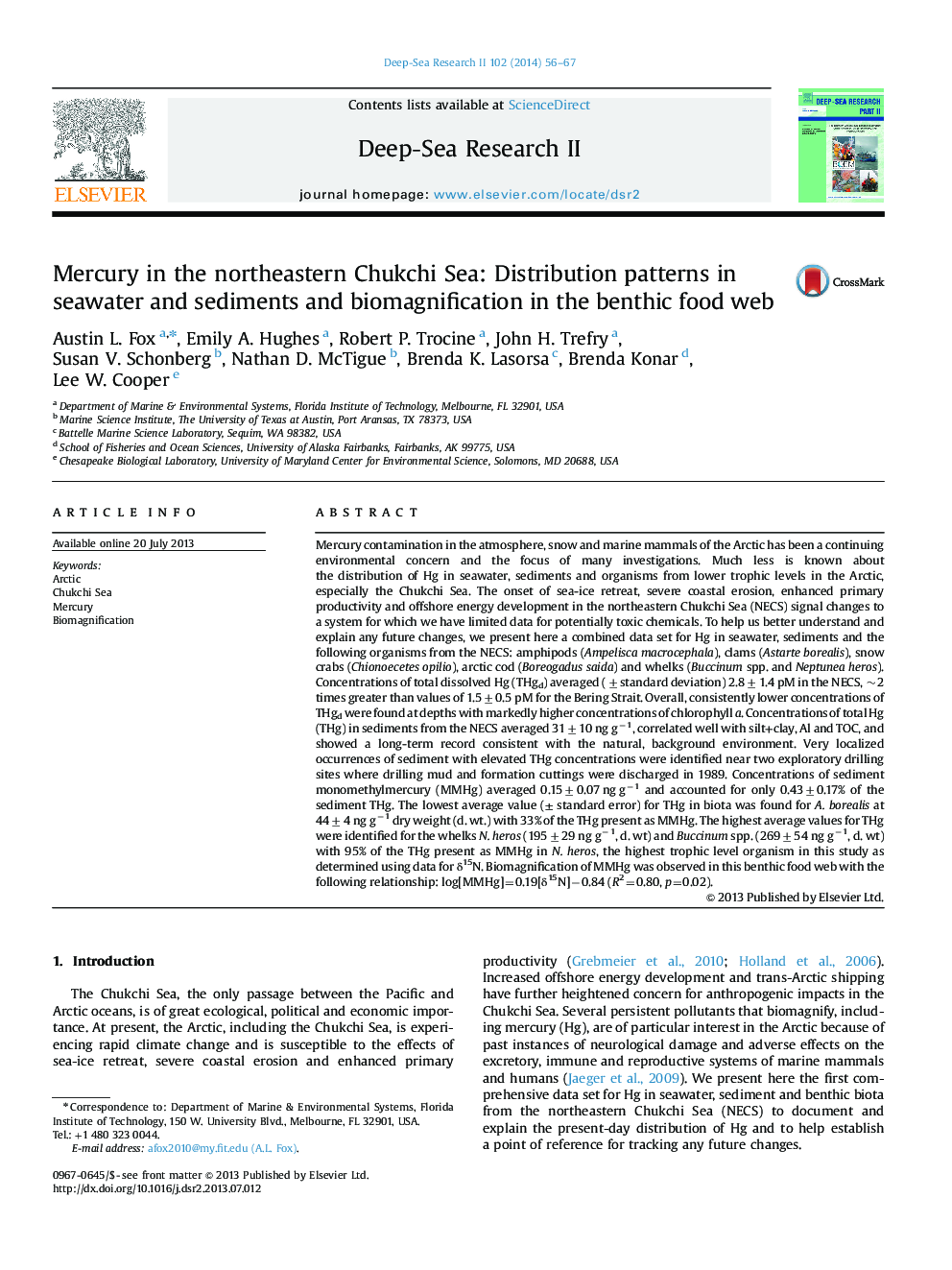| کد مقاله | کد نشریه | سال انتشار | مقاله انگلیسی | نسخه تمام متن |
|---|---|---|---|---|
| 4536412 | 1626438 | 2014 | 12 صفحه PDF | دانلود رایگان |
Mercury contamination in the atmosphere, snow and marine mammals of the Arctic has been a continuing environmental concern and the focus of many investigations. Much less is known about the distribution of Hg in seawater, sediments and organisms from lower trophic levels in the Arctic, especially the Chukchi Sea. The onset of sea-ice retreat, severe coastal erosion, enhanced primary productivity and offshore energy development in the northeastern Chukchi Sea (NECS) signal changes to a system for which we have limited data for potentially toxic chemicals. To help us better understand and explain any future changes, we present here a combined data set for Hg in seawater, sediments and the following organisms from the NECS: amphipods (Ampelisca macrocephala), clams (Astarte borealis), snow crabs (Chionoecetes opilio), arctic cod (Boreogadus saida) and whelks (Buccinum spp. and Neptunea heros). Concentrations of total dissolved Hg (THgd) averaged (±standard deviation) 2.8±1.4 pM in the NECS, ~2 times greater than values of 1.5±0.5 pM for the Bering Strait. Overall, consistently lower concentrations of THgd were found at depths with markedly higher concentrations of chlorophyll a. Concentrations of total Hg (THg) in sediments from the NECS averaged 31±10 ng g−1, correlated well with silt+clay, Al and TOC, and showed a long-term record consistent with the natural, background environment. Very localized occurrences of sediment with elevated THg concentrations were identified near two exploratory drilling sites where drilling mud and formation cuttings were discharged in 1989. Concentrations of sediment monomethylmercury (MMHg) averaged 0.15±0.07 ng g−1 and accounted for only 0.43±0.17% of the sediment THg. The lowest average value (± standard error) for THg in biota was found for A. borealis at 44±4 ng g−1 dry weight (d. wt.) with 33% of the THg present as MMHg. The highest average values for THg were identified for the whelks N. heros (195±29 ng g−1, d. wt) and Buccinum spp. (269±54 ng g−1, d. wt) with 95% of the THg present as MMHg in N. heros, the highest trophic level organism in this study as determined using data for δ15N. Biomagnification of MMHg was observed in this benthic food web with the following relationship: log[MMHg]=0.19[δ15N]−0.84 (R2=0.80, p=0.02).
Journal: Deep Sea Research Part II: Topical Studies in Oceanography - Volume 102, April 2014, Pages 56–67
